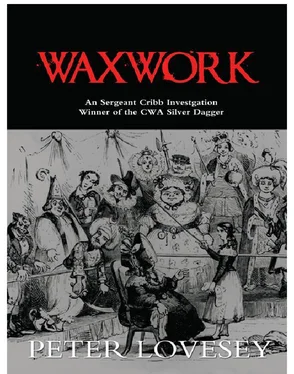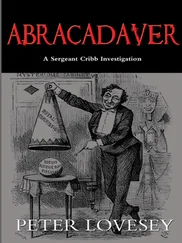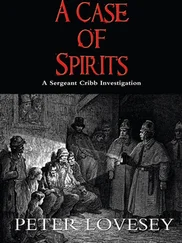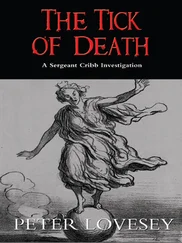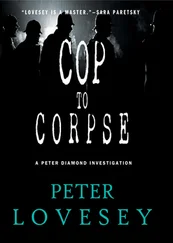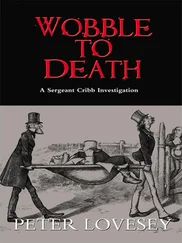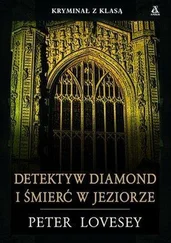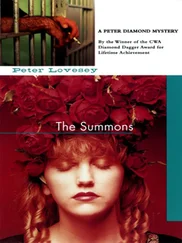Peter Lovesey - Waxwork
Здесь есть возможность читать онлайн «Peter Lovesey - Waxwork» весь текст электронной книги совершенно бесплатно (целиком полную версию без сокращений). В некоторых случаях можно слушать аудио, скачать через торрент в формате fb2 и присутствует краткое содержание. Жанр: Исторический детектив, на английском языке. Описание произведения, (предисловие) а так же отзывы посетителей доступны на портале библиотеки ЛибКат.
- Название:Waxwork
- Автор:
- Жанр:
- Год:неизвестен
- ISBN:нет данных
- Рейтинг книги:3 / 5. Голосов: 1
-
Избранное:Добавить в избранное
- Отзывы:
-
Ваша оценка:
- 60
- 1
- 2
- 3
- 4
- 5
Waxwork: краткое содержание, описание и аннотация
Предлагаем к чтению аннотацию, описание, краткое содержание или предисловие (зависит от того, что написал сам автор книги «Waxwork»). Если вы не нашли необходимую информацию о книге — напишите в комментариях, мы постараемся отыскать её.
Waxwork — читать онлайн бесплатно полную книгу (весь текст) целиком
Ниже представлен текст книги, разбитый по страницам. Система сохранения места последней прочитанной страницы, позволяет с удобством читать онлайн бесплатно книгу «Waxwork», без необходимости каждый раз заново искать на чём Вы остановились. Поставьте закладку, и сможете в любой момент перейти на страницу, на которой закончили чтение.
Интервал:
Закладка:
‘I have mentioned that I was accustomed to attend to the decanters which my husband keeps in the studio in order to offer a glass of wine to his sitters. The weekly order of wine is sent from Morgan’s in Brentford and arrives by noon on Mondays. At lunch-time I fill the decanters with fresh sherry, port and madeira.
‘On Monday, 12th March, my husband had engaged to attend a convention of the Portrait Photographers’ League, of which he is Vice-Chairman, in Brighton, where he was to stay overnight, returning Tuesday morning. We had no sittings arranged for that day, so I knew that Mr Perceval would be working alone in the studio, developing the previous week’s dry plates. I also knew that he was likely to help himself liberally to my husband’s madeira. In the morning I waited as usual for the wine to arrive and then took the bottles to the studio and filled the decanters.
‘When Mr Perceval went out for lunch at one o’clock, I returned to the studio, unlocked the poison cabinet, found the bottle of potassium cyanide and poured about a third of the contents into the decanter of madeira. I then replaced the decanter in the chiffonier where it was kept with the others, and locked the cyanide bottle in the poison cabinet as before.
‘Soon after, I went out to keep an appointment at my dressmaker’s in Sandycombe Road, confident of finding Mr Perceval dead when I returned. The action of cyanide, my husband had often impressed on me, was practically instantaneous and quite fatal. I had convinced myself there was no chance of the body being discovered prematurely, as the servants were under strict orders not to enter the studio rooms in business hours. I intended on my return to arrange things to give the appearance of suicide, placing the bottle of cyanide beside the wine glass from which he had drunk, and emptying the decanter of its poisoned contents, re-filling it with fresh madeira. After searching the pockets of his suit for photographs or documents that might incriminate me, I would call the servants and raise the alarm.
‘I duly returned a few minutes before four o’clock to learn that my plan had gone irretrievably wrong. The body had been discovered and Dr Eagle had already examined it. My understanding of the effects of potassium cyanide had been in error. Mr Perceval had not died instantaneously. His convulsions had been so frantic and so prolonged that two of the servants had seen fit to disregard their orders and rush to the studio to investigate. They had found him dying, unable to speak. The housemaid, I was told, had gone to fetch the doctor, who had recognised the symptoms of cyanide poisoning.
‘There was nothing I could do to alter the eventual conclusion that Mr Perceval had been murdered, although Dr Eagle made no statement on the matter to me, simply asking where the poison was kept. I unlocked the cabinet and showed him the bottle of potassium cyanide. He sent one of the servants for the police and another for Mr Allingham, the family solicitor. Soon after this I was seized with the gravity of my situation, and fainted. When I had recovered sufficiently for the police inspector to question me, I pretended to have no knowledge of the events leading to Mr Perceval’s death.
‘I swear that this is a true statement superseding all other statements ascribed to me and signed by my hand this first day of June, 1888.
Miriam Jane Cromer ’
Mr Justice Colbeck cautioned the Grand Jury that the law does not regard a confession in itself as establishing incontrovertible evidence of guilt, but that independent evidence taken in association with the statement warranted him to advise them that it was their duty to find a True Bill against Mrs Cromer.
The True Bill was returned.
FRIDAY, 8th JUNE
The trial itself opened on a morning of overcast sky and heavy rain. The chandeliers were turned up in Number One Court at 10 a.m. The ushers opened the doors of the public gallery and it filled in little more than a minute, the jewellery in the gaslight confirming that it was still a fashionable occasion, even if the confession had removed the uncertainty over the outcome.
The call to rise came at 10.35 a.m. Mr Justice Colbeck was wearing the ermine-trimmed scarlet robe of the Queen’s Bench Division. He carried a pair of white gloves in his left hand and a piece of black material in his right. Without looking up, he deposited them on the bench beside the small posy of flowers to his right. Then he drew his robe forward and took his seat under the sword of justice. The court settled again.
The prisoner was called to the bar.
All week the illustrated newspapers had supplied their readers with artists’ ‘impressions’ of Miriam Cromer. They were strikingly at one with each other. And with the faces of the young women advertising Pear’s, Cadbury’s and Eno’s.
People craned for a view of the woman as she was. Flanked by two wardresses, she mounted the steps from the passage under the dock a few minutes before the judge’s procession entered. Those seated nearest had heard the click of the dock-handle, but the prisoner had been kept well back, obscured in a group that included the keeper of Newgate Prison, the chaplain and a doctor. Now the wardresses steered her to the front.
She faced the judge without gripping the rail, a slight figure in that vast dock.
She was wearing black, as was customary. Her clothes were fashionable, even so: a zouave jacket in velvet over an Ottoman silk gown with jockey sleeves and jet fastenings. The line of the skirt was augmented dramatically by a crinolette, a bustle worn low in the latest style. She was not veiled. The crownless velvet toque high on her head accented the honey colour of her hair in the artificial light. It was styled of necessity in a simple fashion, drawn back severely to a chignon.
Her features, profiled against the dark panelling, betrayed no anguish. Rather she seemed to repudiate sympathy in the way she held her head so that her throat and jaw formed an angle as sharp as the outline of the dock. Her lips curved naturally in a shape that could have been taken for the start of a smile if it were not corrected by the slight contraction of muscles in her cheek, dignifying the expression. Her skin was smooth and very pale. She had a fine nose, delicate, arched eyebrows and a high, intelligent brow. What ambushed the expectations of the packed court were the eyes of the accused woman-eyes, the least susceptible of all the features to the pens of newspaper illustrators. Hers held no shame. Almost violet in their blueness and dark-edged from weeks in prison cells, those eyes were unforgettable. Dignified, resolute and steady.
So steady.
There was an air of suspended animation about her, giving her the look of a figure in wax.
The indictment was read: ‘Miriam Jane Cromer, you stand charged with having at Kew in the County of Surrey on the twelfth of March, 1888, wilfully and with malice aforethought, killed and murdered one Josiah Perceval. How say you: are you Guilty or Not Guilty?’
She answered clearly and without hesitation, ‘Guilty.’
At the request of the judge, the Attorney-General, representing the Crown, made a statement summarising the facts of the case, showing how the evidence substantiated the confession of the accused.
Counsel for the Defence, Mr Michael Gaskell, Q.C., then rose to say, ‘My lord, the prisoner wishes to inform the court that she alone is guilty of this crime. In affirming her readiness to atone for her guilt, she asks that consideration be given in judgment to the painful and insupportable circumstances that induced her to perpetrate the crime.’
Mr Justice Colbeck tersely answered, ‘The prerogative of mercy does not rest with me. The plea must be recorded.’
Читать дальшеИнтервал:
Закладка:
Похожие книги на «Waxwork»
Представляем Вашему вниманию похожие книги на «Waxwork» списком для выбора. Мы отобрали схожую по названию и смыслу литературу в надежде предоставить читателям больше вариантов отыскать новые, интересные, ещё непрочитанные произведения.
Обсуждение, отзывы о книге «Waxwork» и просто собственные мнения читателей. Оставьте ваши комментарии, напишите, что Вы думаете о произведении, его смысле или главных героях. Укажите что конкретно понравилось, а что нет, и почему Вы так считаете.
